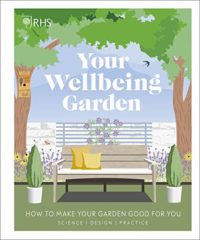
Setting Up
The first thing to consider is your location. Some plants prefer full direct sun, while others prefer shade and partial sunlight. If you’re planting directly into the ground, it’s good to get the soil tested for heavy metals and toxins that could leach into the plant’s roots. If you think your soil might be unsafe, building a raised garden bed is an excellent way to ensure you’re growing healthy produce.
Raised Garden Beds Vs. Planting Directly in Soil
There are multiple benefits to either method. A raised garden bed requires assembly and a lot of soil to fill but depending on the land, it typically is less labor-intensive than trying to improve compacted, clay-filled soil. It’s also easier to ward off moles and small critters than having vegetables accessible from the ground.
Planting directly into the ground improves your soil which benefits future plants and can also help retain more rainwater and prevent flooding. Another major benefit is that it requires less frequent watering. A raised garden bed can dry out completely over the course of a week or so, causing the plants to wilt and their roots to die off, but when planting in the ground, the roots of your crops will seek water deeper in the ground, creating bigger plants and bigger yields.
Getting Started
High-quality garden soil can get expensive. If you’re filling a new garden bed, you can fill the first half/third with topsoil, lawn clippings, small branches, and organic materials that can break down into nutrient-rich compost over time. If you are revitalizing an existing garden, you can mix compost into the old soil to add enough nutrients for your new plants.
Helpful Things to Have
- Garden trowel or spade to assist with digging and planting seeds and roots.
- Hand rake to help mix soil, turn beds, and pull weeds.
- Stakes and trellises to support climbing plants and heavy produce like melons and tomatoes.
- Organic cotton string helps support plants and can be used to divide a garden bed into 1-inch squares to maximize the amount you can harvest in a given space.
- A dedicated watering can/applicator for fertilizer.
Maintenance
The amount of work you want to put into your garden is up to you. Some gardeners become scientists and create systems where they can control every factor that goes into growing good fruits and vegetables but most gardening done in the natural world is by birds dropping seeds as they fly. You can get away with a very relaxed approach if you have decent soil and still get great results.
Here are some basics that you will need:
- Water. Plants grown in containers will need frequent watering, but plants in the ground or raised beds will send their roots deep into the ground to seek out water, creating larger plants. For these, you can typically forgo water entirely except for periods of drought. Daily watering can be counterproductive unless the containers are small because roots will not need to grow to search for moisture.
- Fertilizer. Good organic potting soil should have enough nutrients to sustain your garden initially, but eventually, your plants will require fertilizer. Plants need nitrogen, phosphorus, and potassium to stay healthy and continue growing. If leaves start turning yellow, there’s a good chance it’s because of a nutrient deficiency.
Companion Plants
There are many benefits to planting different herbs and vegetables together. Flowers that attract bees can increase pollination in surrounding plants, increasing their yields. Pole beans can tether themselves to taller crops like corn and replenish the nitrogen in the soil being consumed by the corn. Tall plants provide shade to smaller plants, and smaller plants shield the soil from direct sunlight.
- Corn, pole beans, squash.
- Basil and tomatoes
- Nasturtiums can attract cabbage worms and keep them off your kale, cabbage, and lettuces.
- Garlic, mint, and citronella can be used to deter various pests from mosquitos and aphids to deer.
]Photo by Local Food Initiative
Further Reading
From our Collection
Gardening for Everyone: Growing Vegetables, Herbs, and More at Home by Julia Watkins
A guide to creating and growing a backyard garden simply and sustainably–from planning to planting to harvest, with profiles of essential vegetables and herbs, ecological tips, and fun and creative projects.
Your Well-Being Garden: How to Make Your Garden Good for You by Alistair Griffiths, Matt Keightley, Annie Gatti, Zia Allaway
Your garden could become even better for you. Discover how certain plants can form a barrier against air and noise pollution, why green is so good for us, the way plants can help to save energy, how birdsong alleviates anxiety. Every recommendation is backed by scientific research, drawn together by experts and garden designers from Royal Horticultural Society and the Chelsea Flower Show, who suggest how to translate the science into ideas for your yard and garden, regardless of how much space you have. With this groundbreaking book, find out how, in sometimes very simple ways, you can create an outdoor (or even indoor) green space that nourishes your mind and body, and is good for our planet too.







